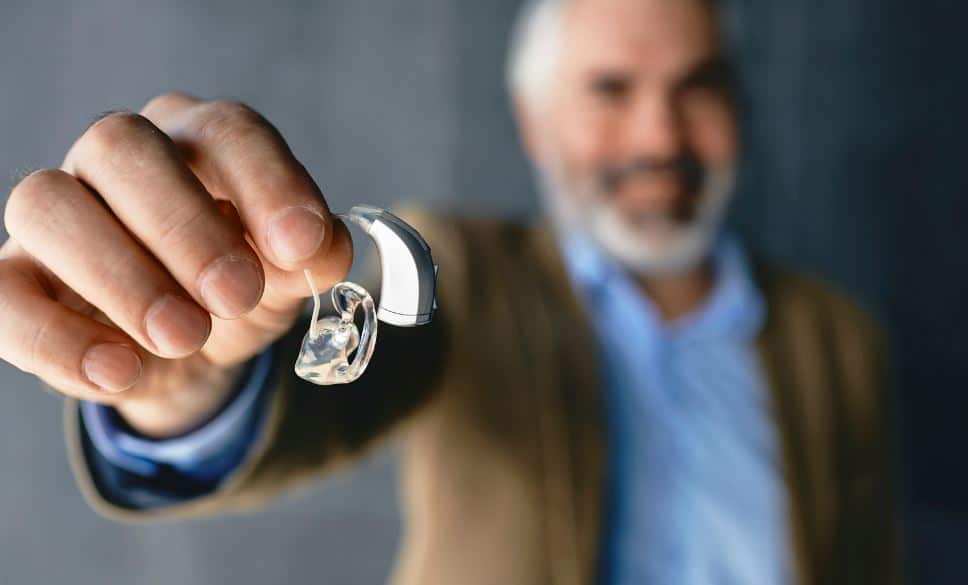Here are ten rules you should be aware of if you wear hearing aids. In brief, they are: (1) Beware of hairspray. (2) Beware of dogs. (3) Be careful with little children. (4) Keep them dry. (5) Open the battery door at night. (6) Rub your hands to check aids. (7) Break in new hearing aids gradually. (8) Put your phone on top of your hearing aid. (9) Change the battery when it beeps. (10) Use a little baby oil.
Top 10 Do’s and Don’ts of Wearing Hearing Aids
Wearing hearing aids comes with its own set of considerations and practices. To ensure optimal performance and longevity of your devices, here are the top 10 rules to follow. Let’s delve into each recommendation in more detail:
- Hairspray Hazard: Avoid letting hairspray come into contact with your hearing aids as it can cause them to malfunction. Remove your hearing aids before applying hairspray and wait for it to dry completely before putting them back on.
- Pet Protection: Keep your hearing aids away from dogs to prevent potential damage. Dogs may mistake hearing aids for toys and chew on them, leading to irreversible harm. Always store your hearing aids in a safe, high place when they are not in use.
- Child Safety: Be cautious around little children who tend to put objects, including small batteries, in their mouths. Ingesting a hearing aid battery can have severe consequences, so if a child swallows a battery, immediately take them to the emergency room. Keep all batteries out of the reach of children.
- Water Worries: Protect your hearing aids from all types of water exposure, including baths, showers, and swimming. Water damage can render the devices inoperable, so it’s essential to keep them dry at all times.
- Preserve Battery Life: Turn off your hearing aids when not in use to conserve battery power. Open the battery compartment to ensure the instrument is completely turned off. However, if you have a hearing aid charging box, this step may not be necessary as most boxes automatically turn off the devices.
- Perform a Daily Check: Before putting on your hearing aids each morning, make sure they are working properly. Rub your hands together near each ear to hear the rubbing sound, indicating that the hearing aids are functioning. Perform this check to ensure both devices are operational.
- Gradual Adjustment: Adjusting to new hearing aids takes time. Start by wearing them for shorter durations, gradually increasing the wearing time each day. Begin with 3 to 5 hours a day during the first couple of weeks, and if comfortable, extend the duration by an hour or two. If any discomfort arises, consult your audiologist.
- Telephone Techniques: There are various ways to use hearing aids with telephones. One simple method is to place the telephone on top of the hearing aid while making or receiving calls. Experiment with different techniques to find the most comfortable and effective approach for you.
- Battery Replacement: If your hearing aids are not rechargeable, you will need to change the batteries periodically. Smaller hearing aids require more frequent battery changes. The devices typically emit a beeping sound to indicate when the batteries need replacement. Pay attention to these signals and change the batteries accordingly.
- Easy Insertion and Removal: Some hearing aids can be challenging to insert and remove. To facilitate a smooth experience, apply a small amount of baby oil to your ear before inserting the hearing aid. The oil will lubricate the ear canal, allowing for easy insertion and removal of the device.
While these ten rules cover the basics of wearing hearing aids, there are additional considerations to keep in mind. Consult with your audiologist for further guidance and recommendations to maximize the benefits of your hearing aids. By following these guidelines, you can ensure the optimal performance and longevity of your devices, leading to improved hearing and overall quality of life.
In addition to these rules, it is important to establish a routine for cleaning and maintaining your hearing aids. Regular cleaning helps prevent wax buildup and ensures clear sound transmission. Consult your audiologist for specific cleaning instructions tailored to your hearing aids. Furthermore, it is essential to keep spare batteries on hand, especially during travel or in emergencies. Stay vigilant for signs of battery depletion, such as decreased sound quality or intermittent functioning, and replace the batteries promptly. Additionally, avoid exposing your hearing aids to extreme temperatures or direct sunlight, as this can damage their components. Lastly, schedule regular appointments with your audiologist for check-ups and adjustments to ensure your hearing aids continue to meet your specific needs.
By following these Do’s and Don’ts, you can enhance your experience with hearing aids, allowing you to fully enjoy the benefits of improved hearing and an enhanced quality of life. Remember, the key to successful hearing aid use lies in proper care, regular maintenance, and open communication with your hearing healthcare provider.








My grandpa is likely going to need hearing aids soon, so thanks for sharing this. I like your point about how it can take awhile to get used to the hearing aids. I’ll suggest to him that he only wear them a few hours a day when starting out so he can adjust.
My father needs to get hearing aids this July. He loves swimming so we will have to find a solution for keeping him from swimming with them. He might want to look for a waterproof hearing aid.
Thanks for reminding me that one should let their hairspray to dry before wearing their hearing aids. My sister, who loves to style her hair all the time, is thinking of visiting an audiologist. I just hope that she’ll remember this if ever she gets prescribed with a hearing aid.
Thanks for the reminder that hearing aids are in no way waterproof. My dad is starting to thinking about wearing a pair of them due to his continued hearing loss over the past few years. It would be very important to make sure that he become familiar with all the maintenance needed to take good care of them.